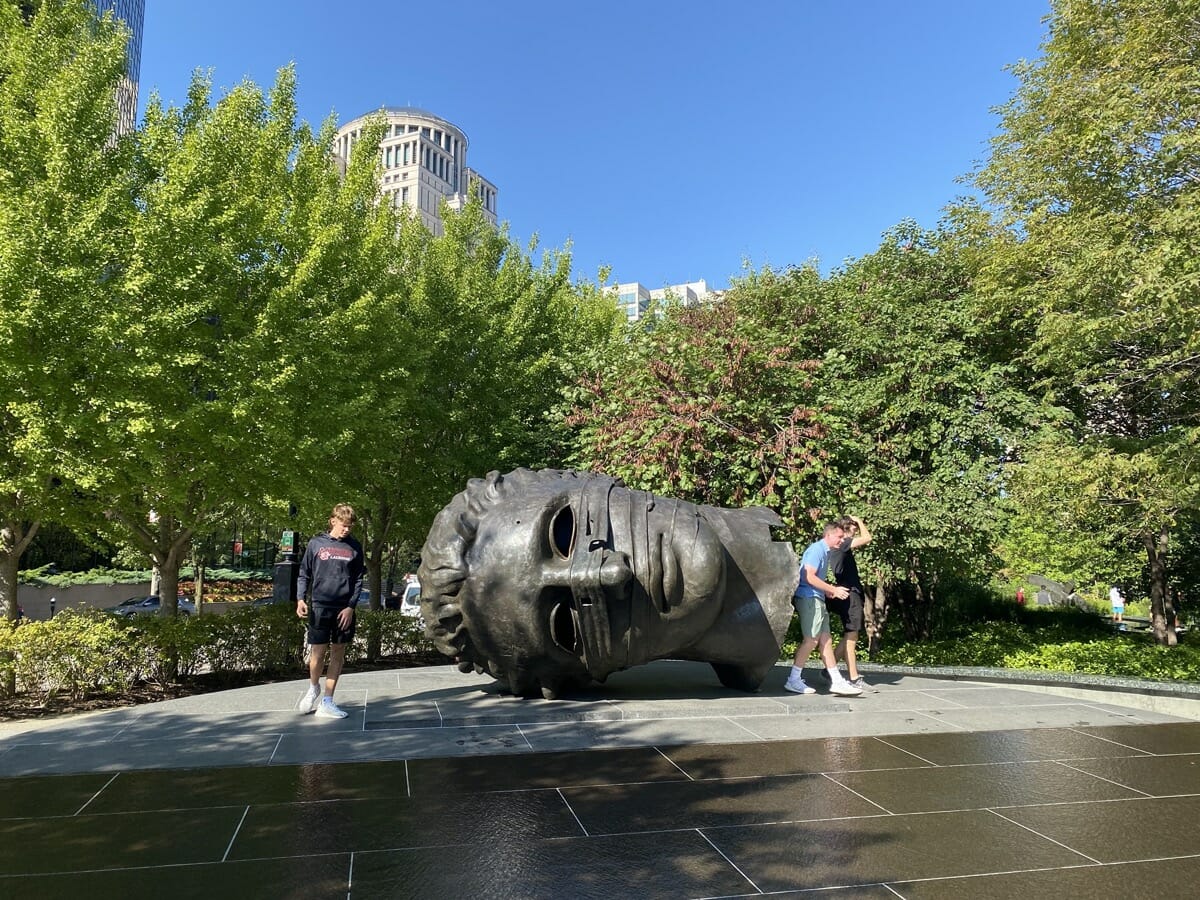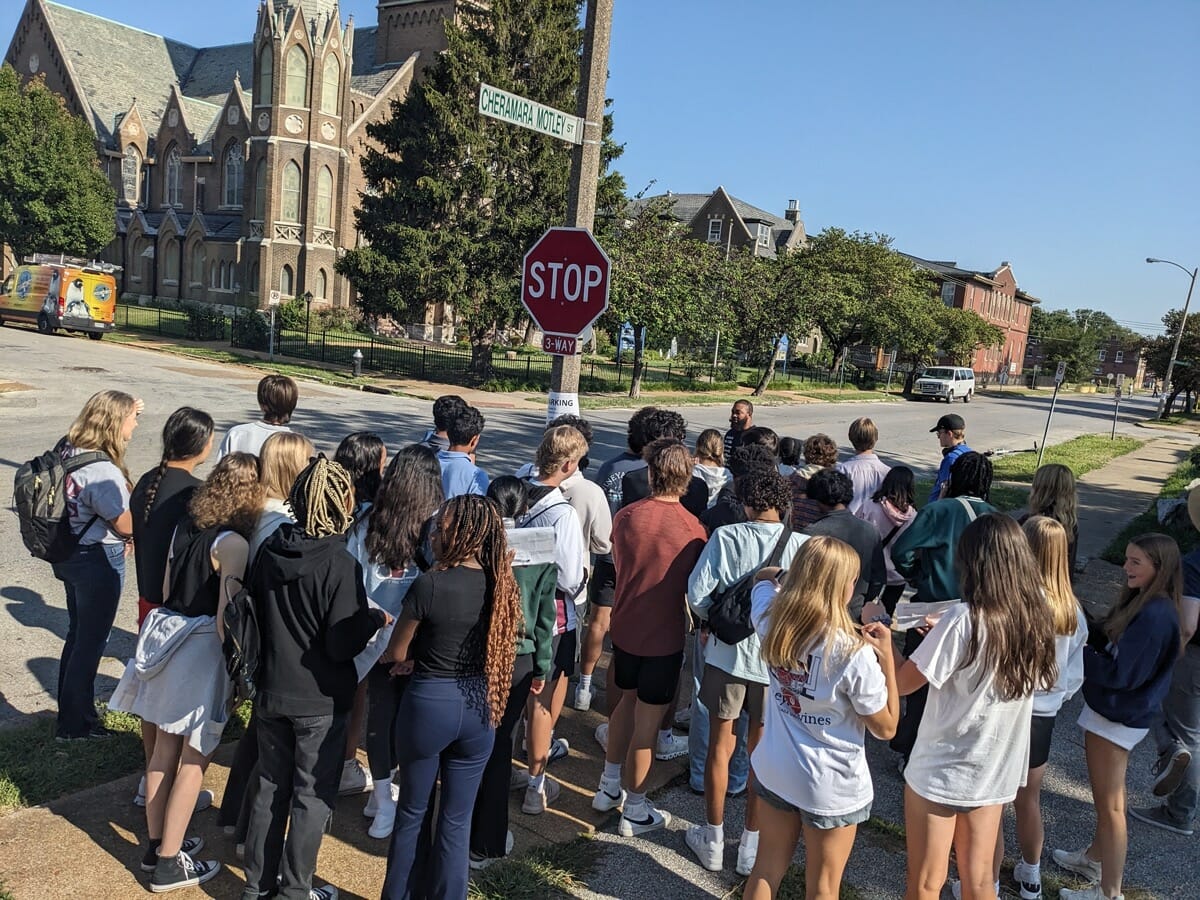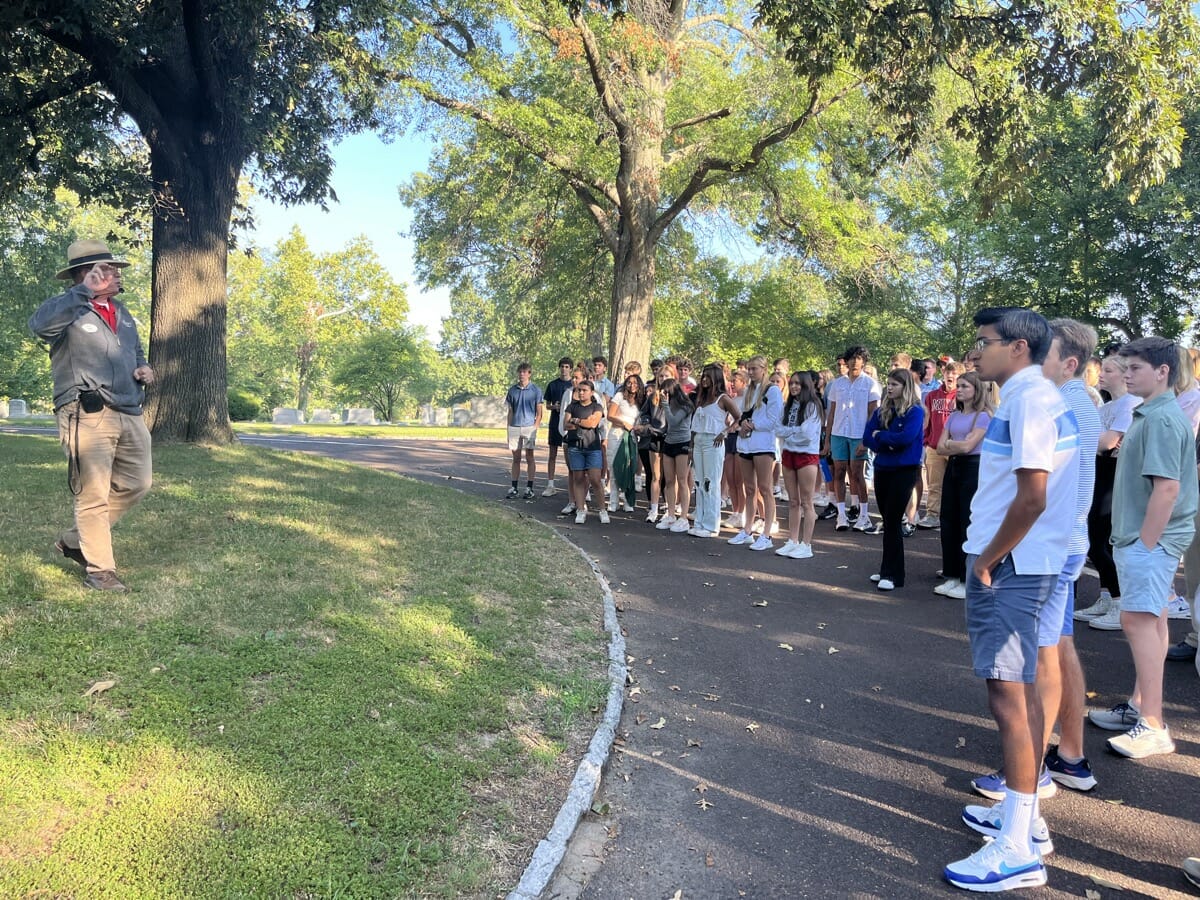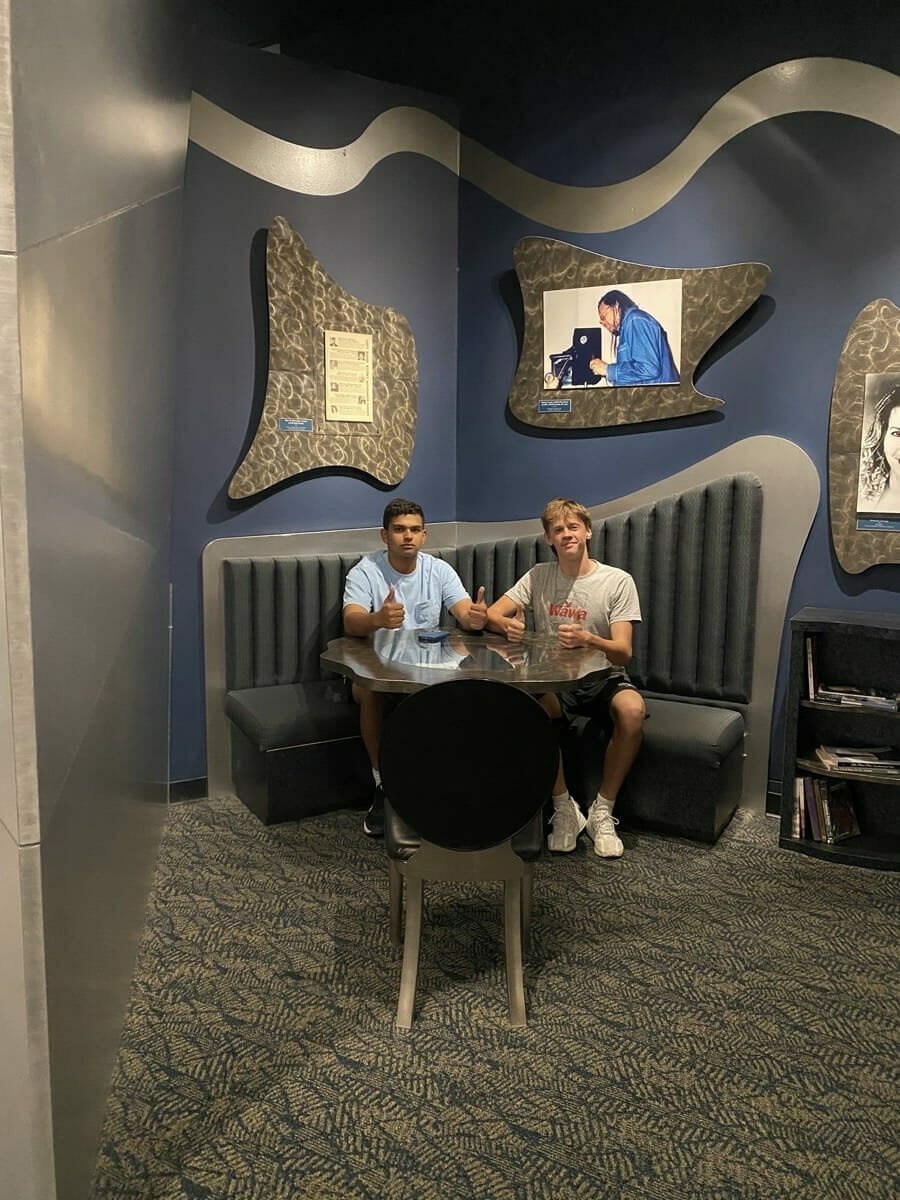On Upper School Community Day this year, 11th graders and their respective history teachers and class advisors explored the St. Louis community as an expansion of the History of St. Louis class. The goal of the course, in alignment with the School’s mission, is to help students understand the larger community and the communities in which they live to become more active and engaged citizens.
The field trip was a welcome opportunity for students to explore history outside the classroom and immerse themselves in the city they call home. Students enjoyed visiting with a few guest speakers to prepare for the field trip. During the first week of school, students met Lindy Drew of Humans of St. Louis, an organization dedicated to telling the stories of individuals all over the St. Louis metro area. The week of the field trip, students enjoyed time with Jorge Riopedre P’20, Executive Director of Delmar DevINe, and Susie Bonwich, Development Associate at New+Found, a real estate development company focused on positively impacting the local community (The City Foundry STL is perhaps its best-known project).
The 11th-grade History of St. Louis teaching team designed a bus tour for the entire junior class to explore Bellefontaine Cemetery, Fairgrounds Park, St. Louis Place and the NGA/Pruitt-Igoe site, Carr Square, Washington Ave., Citygarden/Kiener Plaza, downtown St. Louis, CityPark, and Pillars of the Valley monument. After a festive and delicious lunch at the City Foundry in Midtown, students could choose one of four neighborhoods for a walking tour: The Ville, Soulard, The Hill, and Grand Arts Center.
JK-12 History Department Chair Carla Federman said, “Community Day is a remarkable opportunity for our students to encounter St. Louis in ways they wouldn’t on a day-to-day basis. We’re able to go to places that students have read about and will learn about that hopefully allow them to see the city through a new lens.»
During the tours, students were encouraged to observe what information they were gaining about the city and to note what has changed, how it has evolved, where they see population density, and where they don’t. Additionally, since urban studies frame the class, what the students unpack about St. Louis can be applied to other cities they might want to explore. After the trip, students reflected and discussed how their thinking had been changed or reinforced, connected the journey to what they had already discussed in class, and thought about the St. Louis stories they heard along the way.
Jai Patel ’25 said, «I visited Grand Avenue in St. Louis for a walking tour and took a bus tour around Bellefontaine cemetery, downtown, and the Foundry. I enjoyed learning about why certain buildings were either demolished or built in some neighborhoods, as well as the history behind historic buildings such as the Fox Theatre. One thing I learned was that the city-county divide was meant to keep wealth inside of the city when, in reality, a lot of that wealth, over time, became concentrated more in the county. I also found the inside of the Angad Arts Hotel very amusing with its artwork and color decorations.»
Joe Intagliata ’25 said, «I visited The Ville, just northeast of the Central West End, where I live. Even though it is so close to my own neighborhood, I had never gone there just to spend time and look around, which made this a great experience to get to know my city better. I think so many people, especially at this school, tend to disregard the city and especially the North Side as empty, dangerous, and worthless, but that’s really not fair. There was so much history and culture, even in the small area, that we walked around and learned about.
We saw Sumner High School, which in the recent past has seen a Hail-Mary revitalization effort, coming back to normal figures from only something like 100 students in attendance a few years ago, due entirely to the efforts and lobbying of residents in their community. Sumner High, and so many other Ville institutions, were unique in that they were some of the first Black institutions in the area, some even the first west of the Mississippi. I would say the incredible thing about The Ville is the pride that they have there, which pushes residents to improve their community rather than just write it off like they tend to in the county and even the city government. That pride in such a rich cultural history, in such a beautiful and charming neighborhood, was definitely my favorite thing we saw there.»
Nina Schuerer ’25 said, «I visited Soulard, and we got to see a lot of incredibly preserved and architecturally phenomenal buildings. On two separate occasions, Soulard locals came up to our group and offered their knowledge which was super cool and facilitated a deeper cultural understanding of the area. Even the ‘in-between’ stops on the bus were really informative and fascinating. I particularly loved the Pruitt-Igoe site because I genuinely had not heard about it before. In general, the field trip was such a great way to experience so many of the aspects of St. Louis we have been studying in class in a way that felt very low-pressure and curiosity-oriented.»
Claire Giokas ’25 said, «I visited the Hill with my group and I really enjoyed playing Bocce Ball with my friends and then having the opportunity afterward to go to a bakery and a gelato shop to try different foods. We also visited St. Ambrose church, which I learned was historically an institutional anchor for the Hill.»
Grant LaMartina ’25 said, «My group visited the Grand Center, and I enjoyed learning about the interesting history of the many theaters throughout the area. I only knew about the Fabulous Fox Theatre prior to this trip, so learning that there are many more was incredibly interesting to me. What surprised me was the history of the land itself. According to our tour guide, before the St. Louis population moved west, there were countless large mansions all around the area, and it was thought to be the wealthiest part of St. Louis as a whole! Overall, the field trip was a super fun experience to get closer to my classmates while learning important and meaningful things for my history class.»
Several juniors commented that they want to advise future participants to approach the trip with an open mind, be an active listener, and be ready to see and learn a lot about St. Louis, both well-known and not-so-well-known. In addition, the slate of guest speakers for this class will continue to build on what the students are learning and expose students to the individuals on the front edge of fostering change in the city and how they can be part of that as active and engaged global citizens.
“Our hope is that through the bus tours, neighborhood walking tours, and lunch, students will have found a new appreciation of St. Louis’ past and also an interest in St. Louis’ future,» said Federman.









































